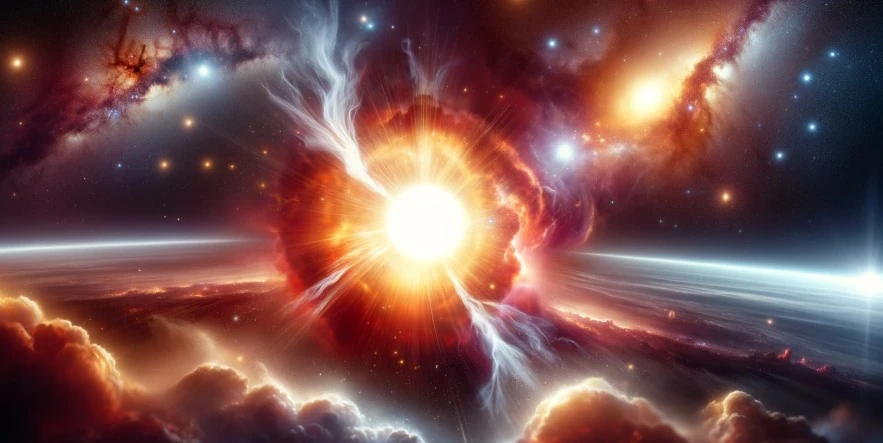Upcoming nova explosion in T CrB star system offers rare night sky event

In a stellar event anticipated to occur between now and September 2024, the T Coronae Borealis (T CrB) star system, located 3 000 light-years away from Earth, is predicted to undergo a nova outburst, becoming visible to the unaided eye. This rare occurrence, last witnessed in 1946, will temporarily elevate the system’s brightness to match that of the North Star, offering a unique viewing opportunity.
A rare night sky event is poised to grace our skies within the coming months, with an impending nova outburst from the T Coronae Borealis (T CrB) star system, marking a once-in-a-lifetime celestial event.
The star system, usually a dim magnitude +10 and invisible to the naked eye, is anticipated to surge to a brightness of magnitude +2, akin to that of the North Star, Polaris. Such a dramatic increase will make T CrB stand out in the night sky for approximately a week before it fades, potentially not reappearing in such splendor for another 80 years.
The visibility of T CrB’s nova offers a unique opportunity for observation and study, promising to captivate not only those within the astrophysical field but anyone who looks up into the night sky. Its brightness means that even those in urban areas, typically disadvantaged by light pollution, will have a chance to witness this stellar phenomenon.
T CrB’s imminent nova is attributed to its composition as a binary system, consisting of a white dwarf and a red giant star. The unique interaction between these celestial bodies leads to the accumulation of matter on the white dwarf, eventually igniting a thermonuclear reaction visible from Earth as a nova.
The event offers a rare night sky view and provides invaluable insights into stellar life cycles and the processes governing them.
Jonathan Blazek, an assistant professor of physics at Northeastern University, emphasizes the significance of such phenomena for both amateur astronomers and the astrophysical community. He explains that T CrB’s nova is a prime example of mass transfer in binary star systems leading to explosive results, a process central to understanding cosmic events like supernovae.
Supernovae, particularly of the Type 1a variety, play a crucial role in our exploration of the cosmos, offering a standardized measure of brightness that aids in the study of the universe.
“This recurring nova is only one of five in our galaxy,” said Lauren Perkings of NASA’s Marshall Space Flight Center.
“This happens because T CrB is a binary system with a white dwarf and a red giant. The stars are close enough that as the red giant becomes unstable from its increasing temperature and pressure and begins ejecting its outer layers, the white dwarf collects that matter onto its surface. The shallow dense atmosphere of the white dwarf eventually heats enough to cause a runaway thermonuclear reaction – which produces the nova we see from Earth.”
References:
1 View Nova Explosion, ‘New’ Star in Northern Crown – NASA/MSFC – February 27, 2024
2 What is a nova outburst? Astrophysicist explains science behind the once-in-a-lifetime event that will light up the sky this year – Northeastern University – March 18, 2024
Featured image: Artist representation of supernovae in T CrB star system. Credit: TW

Commenting rules and guidelines
We value the thoughts and opinions of our readers and welcome healthy discussions on our website. In order to maintain a respectful and positive community, we ask that all commenters follow these rules.